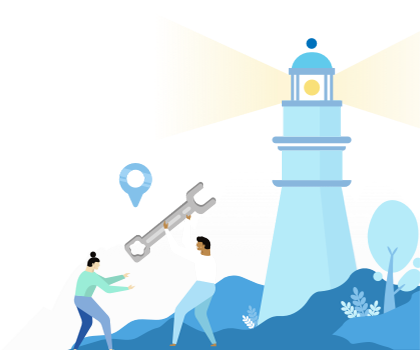What makes changing self-limiting beliefs so challenging?
Changing self-limiting beliefs can be challenging for several reasons, and it's essential to understand these factors to effectively work on overcoming them.

Why is changing self-limiting beliefs difficult?
Here are some of the main reasons why changing self-limiting beliefs can be challenging:
Deeply ingrained
Self-limiting beliefs often develop over a long period, starting from childhood through various experiences and interactions with others. They become deeply ingrained in your subconscious mind, making them difficult to recognise and challenge.
Emotional attachment
These beliefs often have emotional attachments. They may have helped you cope with difficult situations in the past, provided a sense of safety or familiarity, or were formed to protect you from perceived threats. As a result, part of you might be resistant to letting them go because they have served a purpose in your life.
Confirmation bias
Once a self-limiting belief is formed, people tend to look for evidence that supports that belief while ignoring or discounting evidence to the contrary. This confirmation bias reinforces the belief and makes it harder to change.
Comfort zone
Self-limiting beliefs can create a comfort zone, even if it's limiting. Stepping out of that comfort zone can trigger feelings of fear, insecurity, or uncertainty, making it challenging to embrace new beliefs.
Negative self-talk
Constant negative self-talk associated with self-limiting beliefs can become a habit. Breaking this pattern and cultivating self-compassion can be difficult.
Fear of failure
If the belief is linked to fear of failure or rejection, challenging it means taking risks. Fear of failure can hold people back from attempting to change their beliefs.
Identity
Self-limiting beliefs can become intertwined with your sense of identity. Letting go of these beliefs might feel like losing a part of who you are, even if it's detrimental.
Lack of awareness
Sometimes, people may not even be aware that they have self-limiting beliefs. A lack of self-awareness can hinder the process of change.
Unfamiliarity with positive beliefs
If you've held a self-limiting belief for a long time, adopting a new, positive belief may feel unfamiliar, even foreign, or unrealistic. The lack of familiarity can make it difficult to fully embrace the new perspective.
Resisting change
Change, in general, can be challenging for many people. Even if you consciously want to change your beliefs, there might be subconscious resistance to avoid discomfort or the unknown.
When working with clients with self-limiting beliefs, I incorporate a neuro-linguistic model known as Dilts logical levels. This model is particularly useful in updating beliefs that are resistant to change. The logical levels are a hierarchy of criteria, in general, changing the higher levels automatically updates the lower levels (although this is not true in all aspects, no amount of belief, skills and capabilities will allow you to operate a computer if there is no electricity).
In order of importance:
- spiritual, purpose, mission, higher calling, or religion
- identity
- beliefs
- skills and capabilities
- behaviour
- environment
In the logical level’s models, beliefs appear to be interchangeable at all levels, this supports the reasoning above as to why changing self-limiting beliefs can be difficult.
In my experience, to permanently change self-limiting beliefs, all levels need to be addressed. Incorporating proactive work that addresses the environment, your behaviour, your skills and capabilities, your beliefs, identity, and higher purpose is key to success.
For example, if you are a female that believes that you are not good enough and live in a culture where women are not deemed worthy enough to access higher education or follow their dreams (religion/culture, identity, belief, skills, behaviour, and environment) it will take a lot of proactive effort and consistent application to all logical levels to change this belief.
To work out your logical levels in relation to beliefs, you can ask the following questions:
Spirit (purpose): What am I here for?
Identity: Who am I?
Values and Beliefs: What is important to me?
Capabilities: What do I know how to do?
Behaviour: What am I doing?
Environment: Where do I operate?
Despite these challenges, changing self-limiting beliefs is possible with dedication, self-compassion, and consistent effort. Support and help from a therapist as well as change work interventions such as NLP, Hypnotherapy and CBT can facilitate long-lasting powerful and positive changes.

Find a coach dealing with Self-esteem
All coaches are verified professionals



